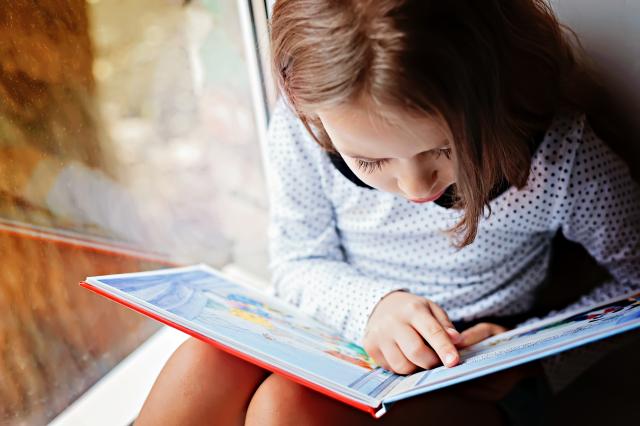 Gender representation is, quite rightly, a hot topic in children’s publishing. I grew up in the nineties, whose media provided a diet of kind women in floral dresses, powerful men in shirts and ties, little girls with dolls and nail varnish, and little boys with footballs and dirty habits. Stepmothers were universally evil and headteachers were almost always men. Of course, plenty of girls loved dolls and many little boys adored football, but I often wonder what the world would have looked like for me if I’d been presented with casts of female doctors, astronauts and builders, and male ballet dancers, homemakers and babysitters. Happily, things are changing across all forms of media, and it is our responsibility, as children’s editors, to lead the way in showing children that there are possibilities beyond the normative roles of ‘man’ and ‘woman’.
Gender representation is, quite rightly, a hot topic in children’s publishing. I grew up in the nineties, whose media provided a diet of kind women in floral dresses, powerful men in shirts and ties, little girls with dolls and nail varnish, and little boys with footballs and dirty habits. Stepmothers were universally evil and headteachers were almost always men. Of course, plenty of girls loved dolls and many little boys adored football, but I often wonder what the world would have looked like for me if I’d been presented with casts of female doctors, astronauts and builders, and male ballet dancers, homemakers and babysitters. Happily, things are changing across all forms of media, and it is our responsibility, as children’s editors, to lead the way in showing children that there are possibilities beyond the normative roles of ‘man’ and ‘woman’.
I am an in-house copyeditor for Ladybird, and my colleagues and I are mindful of how we represent gender in our books. Ladybird is committed to creating diverse books for all children, and part of this commitment is about representing gender in a way that does not pigeonhole according to normative stereotypes. In 2018, The Observer carried out a study of the top 100 children’s books of the previous year. It found that those books were 50 per cent more likely to have a male leading character, and that he would often play a stereotypically masculine role. Male characters were twice as likely to have a speaking role in the books, and a fifth of the books did not include female characters at all.
We know that the media has a huge part to play in shaping children’s worldview. Ladybird is invested in presenting a varied gendered landscape, ensuring, in particular, that a mixture of genders are given the starring role. Much of this work is done by the commissioning editors, and I’m regularly delighted by my colleagues’ commitment to finding stories that play with and challenge stereotypes.
As a copyeditor, part of my role is to interrogate language choices. When a manuscript is handed to me from the commissioning team, one of my jobs is to look out for language that might subtly encourage stereotypical thinking and to then make it as gender neutral as possible. In children’s books, a common example of this is in job titles, so any ‘firemen’, ‘fishermen’, ‘headmasters’ and ‘air hostesses’ become ‘firefighters’, ‘fishers’, ‘headteachers’ and ‘flight attendants’ under my pen. Likewise, I change the words ‘mankind’ or ‘manmade’ to ‘humankind’ and ‘made by humans’, though the latter often requires some light rephrasing.
I also look out for opportunities to swap one gendered pronoun for another, or to use gender-neutral pronouns, where the swap makes for a non-stereotypical outcome. For example, I might change ‘My neighbour said that I could borrow his lawnmower’ to ‘My neighbour said that I could borrow her lawnmower’ or ‘My neighbour said that I could borrow their lawnmower’. For those that are unsure, it is perfectly acceptable to use ‘they’ or ‘them’ as a singular third-person pronoun.
Children’s books that fight against stereotypical gender roles are becoming more and more common, and I believe this will continue. The success of Particular Books’ Good Night Stories for Rebel Girls in 2017 kicked off a flurry of non-fiction children’s titles about brilliant women, and its effect continues to ripple through the industry. I hope to see the industry’s concern with combatting gender stereotypes extend to more representation of other gender identities, and to see more trans and non-binary characters taking up leading roles in children’s titles.
It is vital to remember that gender is only one beam of the diversity rainbow. We must also pay close attention to how we represent race, disability, sexuality and social mobility in our books, ensuring that we reflect the diverse landscape of experiences that exist within our world. At Penguin Random House, we want, through our new hires and authors, to reflect UK society by 2025. As creatives, we can lead the way in presenting children with a wider worldview – one in which there is room for everyone. Society is still on the long road to equality, but through our books we can reflect reality, broaden horizons and show the adults of tomorrow that they are represented in books or can be anything they want to be.
 Philippa Neville is a copyeditor at Ladybird Books, an imprint of Penguin Random House Children’s. She works on titles from both their trade and licensing lists, which range from short picture books to longer books about science, nature and fairy tales. She has been in the industry since 2011 and has a background in primary educational publishing.
Philippa Neville is a copyeditor at Ladybird Books, an imprint of Penguin Random House Children’s. She works on titles from both their trade and licensing lists, which range from short picture books to longer books about science, nature and fairy tales. She has been in the industry since 2011 and has a background in primary educational publishing.
CIEP members can now download a fact sheet and a focus paper on gendered language from the Resources page of the website.
Proofread by Cathy Tingle, Advanced Professional Member.
Posted by Abi Saffrey, CIEP blog coordinator.
The views expressed here do not necessarily reflect those of the CIEP.
